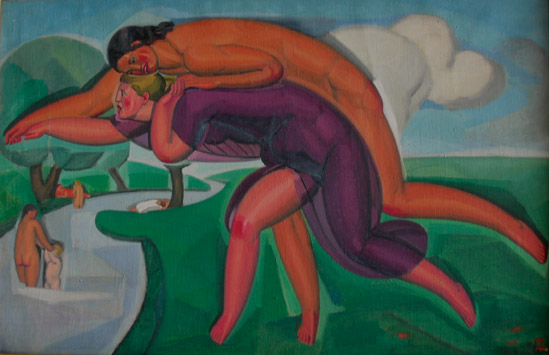Marcel-Lenoir
1872-1931
Marcel-Lenoir was born Jules Oury on May 12, 1872 in Montauban, France.
Marcel-Lenoir moved to Paris in 1889 and attended l’Ecole des
Arts Décoratifs for six months. He was greatly influenced by
the Italian painters represented at the Louvre and works from the Middle
Ages at the Cluny museum.
Marcel-Lenoir’s highly stylized Symbolist works came before the
turn of the 20th century. He participated in the Salons de Rose-Croix,
which began in 1892. This group of artists used Catholic symbolism and
symbols from the occult in their paintings. The Salons de la Rose-Croix
were conceived and presented by Péladan as gestes esthétiques,
it was to be synthesis of the visual arts, literature and music. He
also produced beautiful lithographs including one published by l’Estampe
Moderne.
In 1902 he returned to Montauban and began to write poetry and paint
landscapes. As early as 1912 he incorporated cubist elements in his
technique. With his roots in Symbolism and modern style he produced
allegorical paintings of beautiful god like people playing in forests.
These works are typical of the Art Deco movement. In the 1920s he began
to employ a pointillist technique, but his subjects remained consistent.
Marcel-Lenoir was also known for his frescoes, some with religious symbolism.
Marcel Lenoir died in 1931 at the age of 59 in Montricoux. He left almost
700 paintings and drawings. His work is collected in the museums of
Vienna and the Musée Marcel-Lenoir in Montauban.
|

